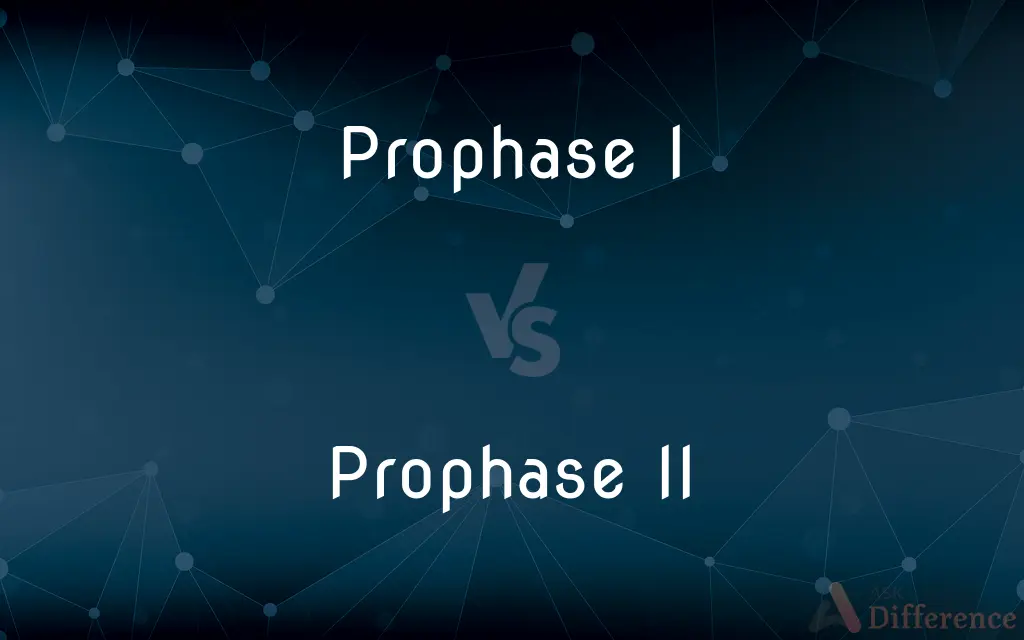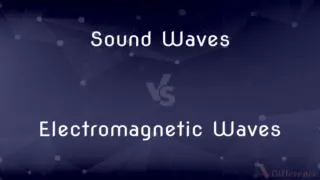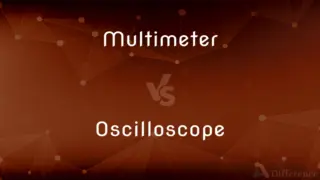Prophase I vs. Prophase II — What's the Difference?
By Tayyaba Rehman — Published on November 27, 2023
Prophase I, in meiosis I, sees homologous chromosomes pair and exchange genetic material (crossing over). Prophase II, in meiosis II, lacks crossing over and behaves similarly to mitosis' prophase, preparing chromosomes for separate divisions.

Difference Between Prophase I and Prophase II
Table of Contents
ADVERTISEMENT
Key Differences
Prophase I signifies the beginning of meiosis I, where the initial steps towards generating gametes are initiated. Comparatively, Prophase II kicks off meiosis II and functions with the objective of completing the process initiated during meiosis I, namely, ensuring the generation of haploid cells from the diploid cells formed earlier.
The characteristic feature of Prophase I is the pairing of homologous chromosomes, leading to the formation of tetrads. In a stark contrast, Prophase II does not facilitate the formation of tetrads since the aim is not to pair homologous chromosomes but to separate the sister chromatids formed during meiosis I.
During Prophase I, a crucial genetic phenomenon known as crossing over occurs, where non-sister chromatids exchange genetic material, leading to genetic variation. Contrarily, Prophase II does not accommodate crossing over and emphasizes the separation of sister chromatids without additional genetic recombination.
In Prophase I, the nuclear envelope dissolves, chromosomes condense, and spindle fibers form, initiating the complex journey of meiosis I. However, during Prophase II, although the chromosomes condense and spindle fibers form, the cell is merely preparing for a simpler division, akin to mitosis, where chromosomes are segregated into different cells.
The ultimate outcome of Prophase I is two cells, each harboring a unique set of chromosomes due to crossing over. In contrast, Prophase II results in four genetically distinct haploid cells, owing to the absence of crossing over and the straightforward separation of chromosomes.
ADVERTISEMENT
Comparison Chart
Chromosome Pairing
Homologous chromosomes pair
No pairing of chromosomes
Crossing Over
Occurs, creating genetic variety
Does not occur
Tetrads Formed
Yes
No
Resultant Cells
Two diploid cells
Four haploid cells
Genetic Composition
Unique due to crossing over
Similar to parent cells
Compare with Definitions
Prophase I
Prophase I ends with cells that are genetically diverse due to genetic recombination.
Prophase I concludes with two cells containing uniquely assorted genetic material.
Prophase II
Prophase II witnesses the condensation of chromosomes and the formation of spindle fibers.
Chromosomes condense in Prophase II, becoming visible and engaging with spindle fibers.
Prophase I
Prophase I entails the condensation of chromosomes, preparing them for separation.
The chromosomes become visibly distinct and compact during Prophase I.
Prophase II
Prophase II is the starting phase of meiosis II, and it does not involve the pairing of chromosomes.
During Prophase II, chromosomes remain unpaired, in contrast to Prophase I.
Prophase I
Prophase I involves the phenomenon of crossing over, where non-sister chromatids exchange genetic material.
Crossing over during Prophase I contributes to genetic diversity within offspring.
Prophase II
Prophase II does not entertain the process of crossing over, and sister chromatids are primary participants.
In Prophase II, sister chromatids are manipulated without further genetic exchange occurring.
Prophase I
Prophase I is the initial phase of meiosis I, characterized by the pairing of homologous chromosomes.
During Prophase I, tetrads are formed as homologous chromosomes pair.
Prophase II
Prophase II aims to separate sister chromatids into distinct daughter cells without additional genetic mixing.
Prophase II ensures sister chromatids are accurately distributed into resultant daughter cells.
Prophase I
Prophase I witnesses the dissolution of the nuclear envelope, enabling interaction between chromatids.
As Prophase I progresses, the nuclear envelope breaks down, making chromosomes accessible to spindle fibers.
Prophase II
Prophase II concludes with the creation of four haploid daughter cells, each with distinct genetic material.
At the conclusion of Prophase II, four genetically unique cells are formed from the original diploid cell.
Common Curiosities
Does crossing over occur during Prophase I?
Yes, crossing over occurs during Prophase I.
Is genetic recombination a feature of Prophase II?
No, genetic recombination does not occur in Prophase II.
How do chromosomes appear during Prophase I?
They condense and become visible during Prophase I.
What is a tetrad in the context of Prophase I?
A tetrad is a pair of homologous chromosomes (four chromatids) during Prophase I.
Do chromosomes pair up in Prophase II?
No, chromosomes do not pair in Prophase II.
Is Prophase II directly involved in creating genetic variation?
No, Prophase II does not introduce new genetic variation.
What is the primary event during Prophase I?
Homologous chromosomes pair and exchange genetic material.
What is the resultant ploidy of cells after Prophase I?
The cells are diploid after Prophase I.
Is genetic material identical in the cells post Prophase II?
No, the cells post Prophase II contain distinct genetic material.
Is Prophase I involved in producing gametes?
Yes, Prophase I is a crucial step in forming gametes through meiosis.
What is the role of the spindle fibers during Prophase II?
Spindle fibers form and align chromosomes during Prophase II.
How many cells result from Prophase II?
Prophase II contributes to forming four haploid cells.
What are sister chromatids and are they separated during Prophase II?
Sister chromatids are identical copies of a chromosome and are separated during Prophase II.
Does the nuclear envelope break down during Prophase I?
Yes, the nuclear envelope disassembles during Prophase I.
How do Prophase I and II contribute to genetic diversity?
Prophase I introduces genetic diversity through crossing over, while Prophase II helps segregate this varied genetic material into distinct cells.
Share Your Discovery

Previous Comparison
Sound Waves vs. Electromagnetic Waves
Next Comparison
Multimeter vs. OscilloscopeAuthor Spotlight
Written by
Tayyaba RehmanTayyaba Rehman is a distinguished writer, currently serving as a primary contributor to askdifference.com. As a researcher in semantics and etymology, Tayyaba's passion for the complexity of languages and their distinctions has found a perfect home on the platform. Tayyaba delves into the intricacies of language, distinguishing between commonly confused words and phrases, thereby providing clarity for readers worldwide.














































